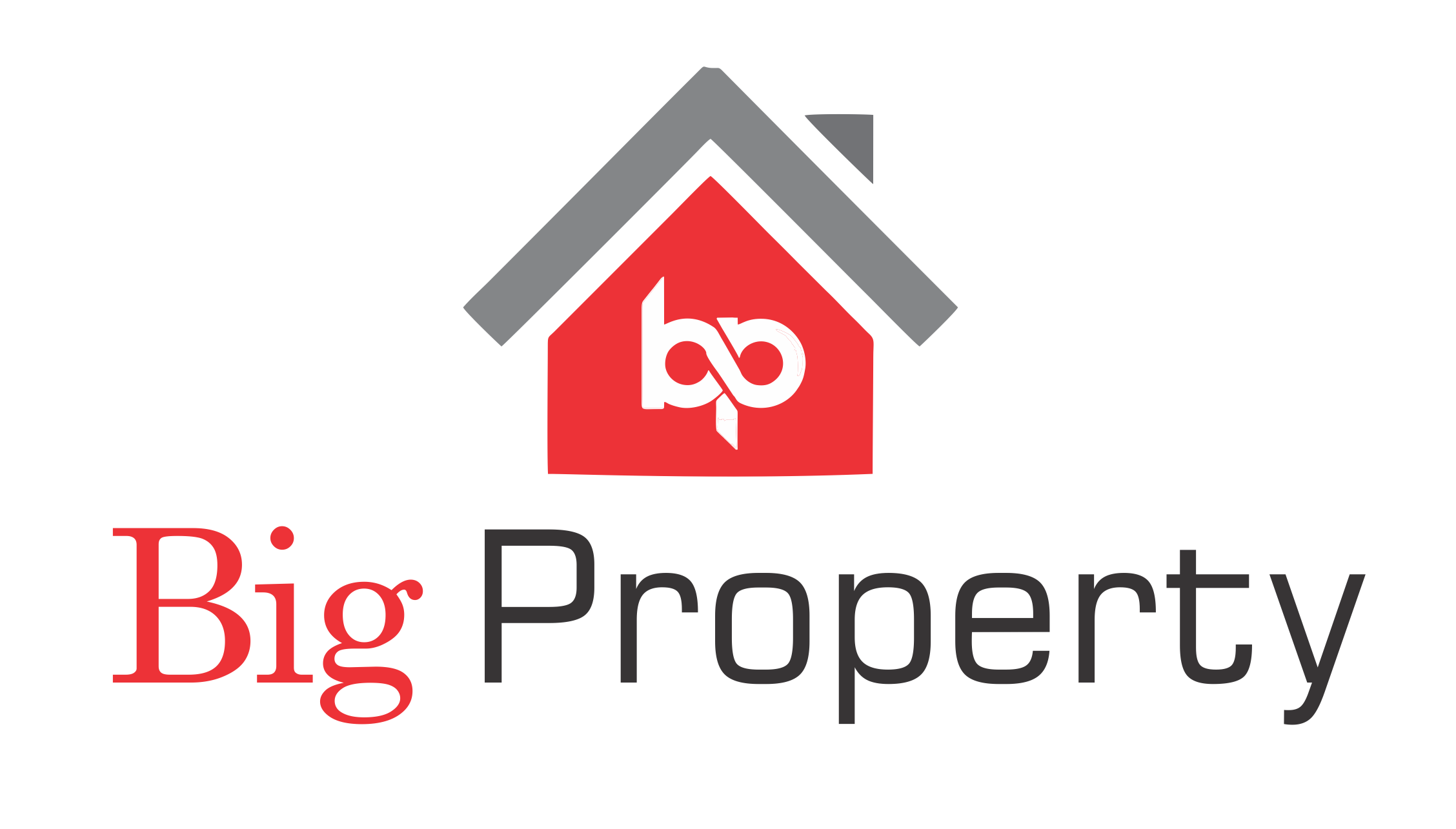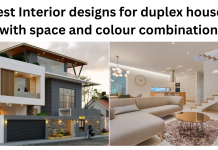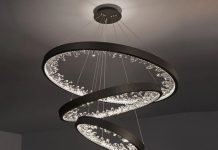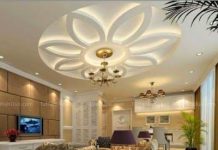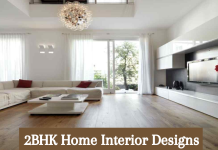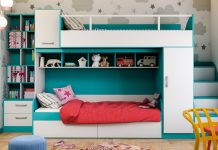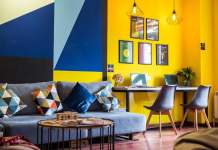If you are in search of creating a space of peace and serenity or a hot spot of vibrancy, contact us and our experts will be happy to assist you. The case might be a mystery until color psychology comes into play. It may be through changing the colors that you are using which will then impact moods, emotions, and even behavior of people. This is therefore the act of key to creating spaces that are warm and inviting.
The Psychology Behind Colors:
Each color is a phenomenon with a distinct mental implication for the human mind influencing emotions, perceptions, and the physical aspect as well. Here’s a brief overview of the psychological associations of some commonly used colors
Blue: Blue which is well known for tranquility, peace, and concentration, is thus the perfect color for the bedroom, an office, or a space in which relaxation and concentration are needed.
Green: As the symbol of the process of growth, harmony, and environment, green creates feelings of balance and comfort and is, therefore, also suitable for the sleeping area, the living room, and the meditation center.
Yellow: Used for its friendliness, sunshine, and fun, yellow enhances your creativity and mood, which is excellent for kitchens, dining areas, and any other frequently visited place.
• Red: Red is a color that represents intensity, life, and excitement and provokes strong emotions. Enhancing mood and heart rates, red is useful in the dining room, recreation area or any space where stimulation is sought.
• Purple: The purple color means luxury, creativity, and spirituality symbolically. As a result, the room for bedroom, library, or creative space experiencing such state might be definitely found.
• Neutral Colors: Colors like white, beige and gray are associated with minimalism, sophistication, and efficiency, which is why they act as an ideal background for other patterns and elements. In fact, they can make other design aspects pop
Harnessing Color Psychology in Interior Design:
Identify Your Goals:
It is important to choose colors that create the desired mood before you start decorating your house. Are you looking to get into a relaxed state of mind, wanting to be productive, or in need of socialization? To achieve your desired outcomes you need to pick colors that will progress these objectives.
• Consider Room Function: While different spaces have their own purposes, the colors should coincide with this specific theme. Try having delicate blues and quiet greens for bedroom, exciting yellows and joyful oranges for the kitchen, and regular soothing neutrals for the living room.
• Balance Bold and Subtle Tones: By mixing saturated and soft colors through your design you can achieve a more captivating ambiance and make the space more 3-dimensional. Be careful with the usage of accent colors as they are used sometimes to direct focus and underscore the important areas
• Experiment with Color Combinations: Invest in some quality paint and apply different color shades to achieve the precise imbalance that your indoors needs. Try to find complementary, parallel, or monochromatic color plans to visualize your designs in consistent and amusing ways.
Factor in Lighting Conditions:
Colors in simple are transformed in a way that only the right light can do. Being mindful of natural and artificial light sources when choosing the colors will ensure they are seen as given when adjusting lighting conditions
Personalize Your Space: Don’t be shy to enliven your uniqueness into your interior design decisions! Choose shades you feel reverberating not only with your clothes but your taste and preference.
Through the exploitation of Color Theory in Interior Design you can create spaces that not only look impressive and aesthetically pleasing but also intentionally evoke emotions that would lead to improved overall health. Your choice of colors may also be the very factor that affects your capability to produce a peaceful oasis or a high-spirited social spot. Therefore, bear in mind that the right colors can ‘sign’ a top-notch home that keeps and cheers you up
Choosing Colors for Your Home: The Psychology Behind It
If you are in search of creating a space of peace and serenity or a hot spot of vibrancy, contact us and our experts will be happy to assist you. The case might be a mystery until color psychology comes into play. It may be through changing the colors that you are using which will then impact moods, emotions, and even behavior of people. This is therefore the act of key to creating spaces that are warm and inviting.
The Psychology Behind Colors:
Each color is a phenomenon with a distinct mental implication for the human mind influencing emotions, perceptions, and the physical aspect as well. Here’s a brief overview of the psychological associations of some commonly used colors
Blue: Blue which is well known for tranquility, peace, and concentration, is thus the perfect color for the bedroom, an office, or a space in which relaxation and concentration are needed.
Green: As the symbol of the process of growth, harmony, and environment, green creates feelings of balance and comfort and is, therefore, also suitable for the sleeping area, the living room, and the meditation center.
Yellow: Used for its friendliness, sunshine, and fun, yellow enhances your creativity and mood, which is excellent for kitchens, dining areas, and any other frequently visited place.
Red: Red is a color that represents intensity, life, and excitement and provokes strong emotions. Enhancing mood and heart rates, red is useful in the dining room, recreation area, or any space where stimulation is sought.
Purple: The purple color means luxury, creativity, and spirituality symbolically. As a result, the room for a bedroom, library, or creative space experiencing such a state might be definitely found.
Neutral Colors: Colors like white, beige, and gray are associated with minimalism, sophistication, and efficiency, which is why they act as an ideal background for other patterns and elements. In fact, they can make other design aspects pop
Harnessing Color Psychology in Interior Design:
• Identify Your Goals: It is important to choose colors that create the desired mood before you start decorating your house. Are you looking to get into a relaxed state of mind, wanting to be productive, or in need of socialization? To achieve your desired outcomes you need to pick colors that will progress these objectives.
• Consider Room Function: While different spaces have their own purposes, the colors should coincide with this specific theme. Try having delicate blues and quiet greens for bedroom, exciting yellows and joyful orange for kitchen, and regular soothing neutrals for living room.
• Balance Bold and Subtle Tones: By mixing saturated and soft colors through your design you can achieve a more captivating ambiance and make the space more 3-dimensional. Be careful with the usage of accent colors as they are used sometimes to direct focus and underscore the important areas
• Experiment with Color Combinations: Invest in some quality paint and apply different color shades to achieve the precise imbalance that your indoors needs. Try to find complementary, parallel, or monochromatic color plans to visualize your designs in consistent and amusing ways.
Factor in Lighting Conditions:
Colors in simple are transformed in a way that only the right light can do. Being mindful of natural and artificial light sources when choosing the colors will ensure they are seen as given when adjusting lighting conditions
• Personalize Your Space: Don’t be shy to enliven your uniqueness into your interior design decisions! Choose shades you feel reverberating not only with your clothes but your taste and preference.
Through the exploitation of Color Theory in Interior Design you can create spaces that not only look impressive and aesthetically pleasing but also intentionally evoke emotions that would lead to improved overall health. Your choice of colors may also be the very factor that affects your capability to produce a peaceful oasis or a high-spirited social spot. Therefore, bear in mind that the right colors can ‘sign’ a top-notch home that keeps and cheers you up.
Frequently Asked Questions (FAQ’s)
Ans: Color psychology is the study of how colors affect our moods, emotions, and perceptions of space. Interior designers use this knowledge to create specific atmospheres and feelings within a room through color choices.
Ans: Consider the function of each room and the mood you want to create. For example, you might use calming blues and greens in your bedroom to promote relaxation, or energizing yellows and oranges in your home office to boost creativity.
